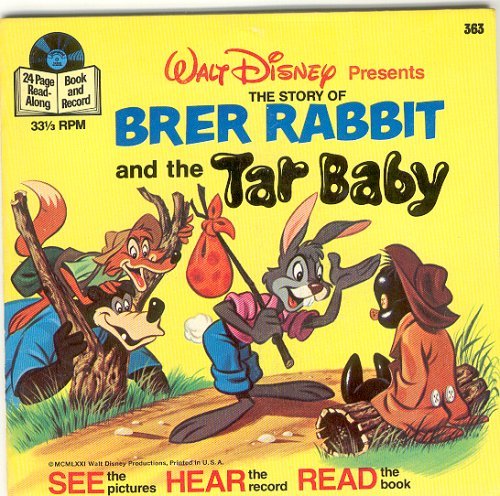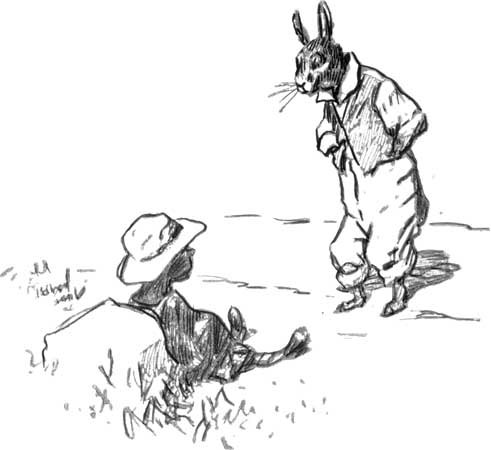kemetic-dreams: Br'er Rabbit /ˈbrɛər/ (Brother Rabbit), also spelled Bre'r Rabbit or Brer Rabbit, is
kemetic-dreams: Br'er Rabbit /ˈbrɛər/ (Brother Rabbit), also spelled Bre'r Rabbit or Brer Rabbit, is a central figure in an oral tradition passed down by African-Americans of the Southern United States. He is a trickster who succeeds by his wits rather than by brawn, provoking authority figures and bending social mores as he sees fit. Popularly known adaptions are by Joel Chandler Harris in the 19th century, and later The Walt Disney Company adapted it for its 1946 animated motion picture Song of the South. African originsThe Br'er Rabbit stories can be traced back to trickster figures in Africa, particularly the hare that figures prominently in the storytelling traditions in West, Central, and Southern Africa. These tales continue to be part of the traditional folklore of numerous peoples throughout those regions. In the Akan traditions of West Africa, the trickster is usually the spider Anansi, though the plots in his tales are often identical with those of stories of Br'er Rabbit. However, Anansi does encounter a tricky rabbit called “Adanko” (Asante-Twi to mean “Hare”) in some stories. The Jamaican character with the same name “Brer Rabbit”, is an adaptation of the Ananse stories of the Akan people.The African savanna hare found all over sub-Saharan African the original Br'er Rabbit.Some scholars have suggested that in his American incarnation, Br'er Rabbit represented the enslaved Africans who used their wits to overcome adversity and to exact revenge on their adversaries, the white slave owners.Though not always successful, the efforts of Br'er Rabbit made him a folk hero. However, the trickster is a multidimensional character. While he can be a hero, his amoral nature and his lack of any positive restraint can make him into a villain as well.For both Africans and African-Americans, the animal trickster represents an extreme form of behavior that people may be forced to adopt in extreme circumstances in order to survive. The trickster is not to be admired in every situation. He is an example of what to do, but also an example of what not to do. The trickster’s behavior can be summed up in the common African proverb: “It’s trouble that makes the monkey chew on hot peppers.” In other words, sometimes people must use extreme measures in extreme circumstances. Several elements in the Brer Rabbit Tar Baby story (e.g., rabbit needing to be taught a lesson, punching and head butting the rabbit, the stuck rabbit being swung around and around) are reminiscent of those found in a Zimbabwe-Botswana folktale.Folklorists in the late 19th century first documented evidence that the American versions of the stories originated among enslaved West Africans based on connections between Br'er Rabbit and Leuk, a rabbit trickster in Senegalese folklore.The stories of Br'er Rabbit were written down by Robert Roosevelt, an uncle of US President Theodore Roosevelt. Theodore Roosevelt wrote in his autobiography about his aunt from the State of Georgia, that “She knew all the ‘Br'er Rabbit’ stories, and I was brought up on them. One of my uncles, Robert Roosevelt, was much struck with them, and took them down from her dictation, publishing them in Harper’s, where they fell flat. This was a good many years before a genius arose who, in ‘Uncle Remus’, made the stories immortal.”These stories were popularized for the mainstream audience in the late 19th century by Joel Chandler Harris (1845–1908), who wrote down and published many such stories that had been passed down by oral tradition. Harris also attributed the birth name Riley to Br'er Rabbit. Harris heard these tales in Georgia. Very similar versions of the same stories were recorded independently at the same time by the folklorist Alcée Fortier in southern Louisiana, where the Rabbit character was known as Compair Lapin in Creole. Enid Blyton, the English writer of children’s fiction, retold the stories for children. -- source link


